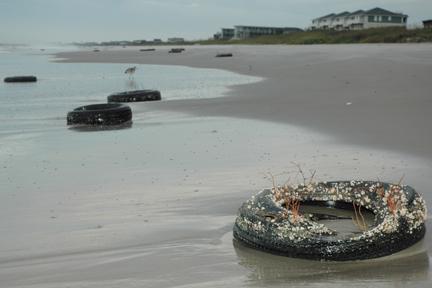
Hundreds of tires used to build artificial reefs decades ago have washed ashore on two North Carolina beaches after a coastal storm swept up the eastern seaboard last Sunday.
A crew with the North Carolina Division of Marine Fisheries cleared all of about 1,000 tires that littered Holden Beach’s ocean shore Tuesday, said Patricia Smith, the division’s public information officer.
Supporter Spotlight
The tires were disposed of in an area landfill.
Division staff also began picking up Tuesday what the division estimates to be several hundred tires that washed onto Indian Beach’s shore following Sunday’s coastal storm, which brought gusty winds, storm surge and rain that caused localized flooding.
Smith said in an email that staff will continue to remove tires from that Carteret County’s shoreline Wednesday.
“DMF will continue to monitor the beaches over the next few days,” Smith said.
Coastal storms have churned up old artificial tire reefs in the Atlantic Ocean for years and left tires scattered by the hundreds on beaches.
Supporter Spotlight
The practice of using scrap vehicle tires to build up artificial reefs began back in the late 1950s or early 1960s, according to the “2020 Guidelines for Marine Artificial Reef Materials,” a public of the Atlantic and Gulf State Marine Fisheries Commissions.
Tire reefs were an acceptable low-cost alternative disposal option for millions of stockpiled tires through to the early 1980s, when states, including North Carolina, stopped using them to build artificial reefs.
State fisheries began taking over artificial reefs off the coast in the early 1970s.
Millions of tires remain in artificial reefs along the nation’s coasts.







